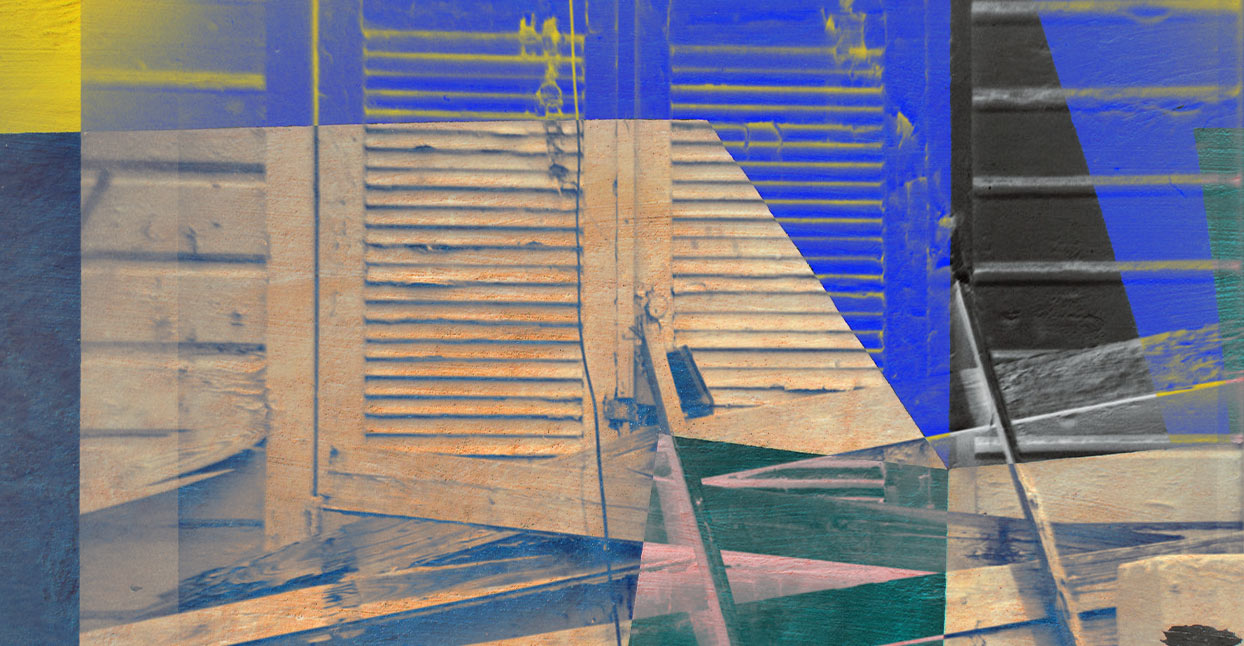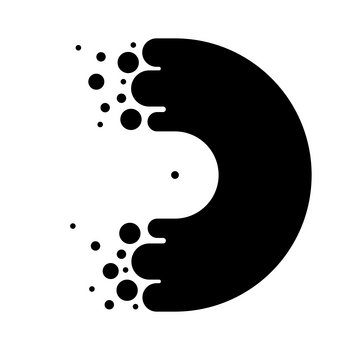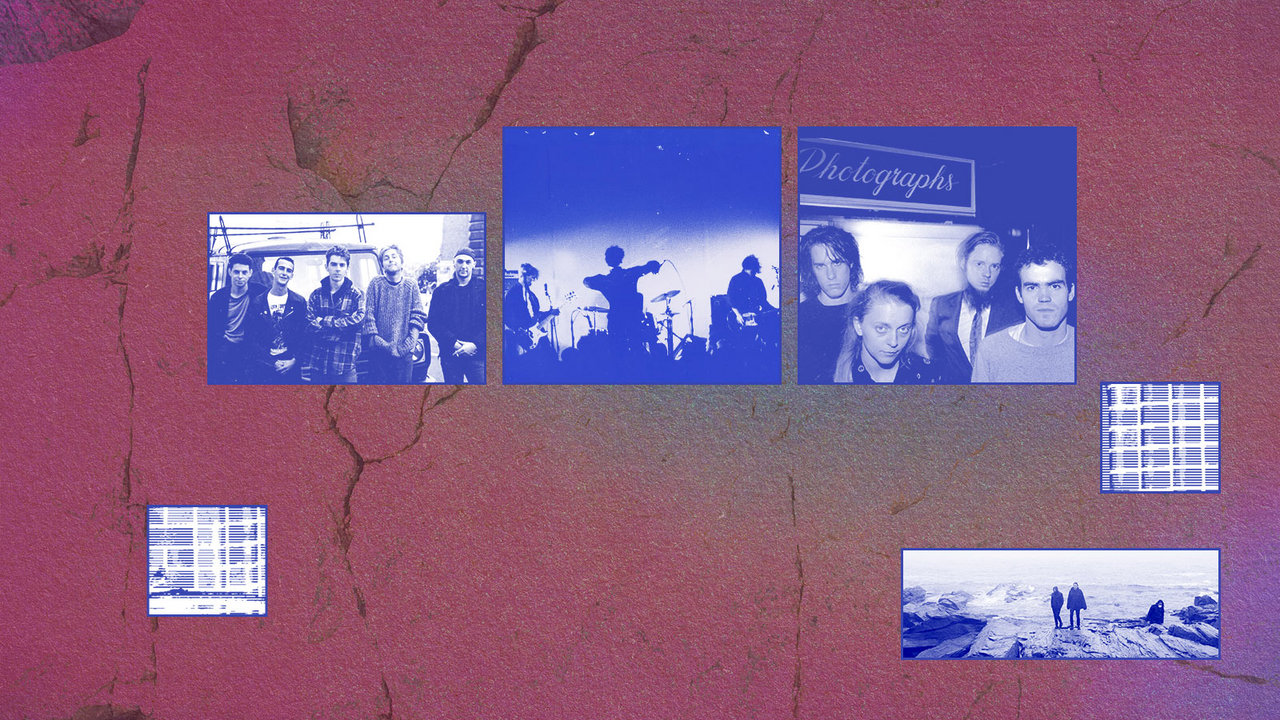
For survivors of Hurricane María—the category five natural disaster that ravaged the island of Puerto Rico in September 2017—memories of the event have become a blur. Looking back at a time when the entire island was consumed daily with the task of finding basic necessities for survival—shelter, gasoline, food, clean water—timeframes get muddled. But there’s one thing no one can forget: the sound of the wind. It’s unnerving—something so unnatural that it can only come from nature at its most extreme. It comes in waves and crashes, ripping trees from roots and threatening the stability of buildings.
“It was like listening to a ghost or a specter, surrounding your house; wanting to eat you,” electronic music and noise composer, José Iván Lebrón Moreira, explains over the phone from his house in Puerto Rico. “The analogy sounds really childish, but that’s how everybody was feeling at the time.”
Recluso, the masked beatmaker and mainstay on the San Juan beat scene, had a similar experience. “The only thing I can remember from that time was that everything was so intense; so many things happened in such a short period of time. You could feel a rumbling outside the windows; everything was vibrating. We feared for our safety in the apartment, so we left for the hallway of the building. We live on the 12th floor, and our apartment was flooding; there was water filtering from the apartments above us, from the windows…from everywhere.”
While no one could’ve prepared emotionally for the full force of the hurricane, both Recluso and Lebrón Moreira had already had already experienced something similar just a few weeks earlier with Hurricane Irma, which grazed the island before moving to Florida. Aside from securing their homes and buying provisions, both Lebrón Moreira and Recluso, thinking ahead to the oncoming storm, made changes to the ways they composed their music. Lebrón Moreira, who has always been interested in ambient music, started recording Irma’s winds with a battery powered BOSS 864 multitrack recorder, a battery powered SP 404 SX sampler, a laptop, and a microphone.



Cassette

Recluso moved more quickly. “When it came time to leave the apartment, I had already prepared an emergency backpack,” Recluso explains. “Inside this backpack, we had basic needs items and, obviously, wrapped in with a lot of care, my SP 404. I left everything else in the apartment. But that’s how I made sure that I could keep making music.”
Having drastically downsized their setups, both artists made music in the aftermath of Maria as best as they could—powering their laptops and cellphones at fast food establishments, finding batteries, and using their instruments in the darkness. The results are documented across three projects: Lebrón Moreira’s Isla Eterna, and Reclusos’s Botones & Knobs and Los Beats No Se Hacen Solos (which were combined and reissued as El Beat Tape). Each of began with wildly different intentions, but all of them ultimately served as a means to process the tragedy, and to reevaluate the idea of artistic creation during times of crisis.
***
José Ivan Lebrón Moreira had always been a fan of ambient music, incorporating elements of the genre in past projects, like his indie rock band, Moreira. Once news of the first hurricane, Irma, hit San Juan in September 2017, Lebrón Moreira had already decided that he was going to spend his time during the storm recording the sound of the wind. As he tells it, he had set up two microphones on two windows of his apartment, wanting to record the entire atmospheric event. He ended up recording a little more than 45 minutes before his laptop ran out of battery. The energy company had already shut down power, and there was no way to turn the computer back on. In hindsight, Lebrón Moreira calls this time his rehearsal.
“Going through that experience helped me because, when María came, those sounds were much more interesting, more impactful, and I ended up recording shorter beats,” Lebrón Moreira says. “I would record five minutes, I would stop, and shut down the computer. Forty minutes would pass, and I would do it all over again, and record 10 minutes. That’s how I managed to record the entire hurricane. When I sat down to choose the samples, you could see in waveform the progression of the sound, and the wind. It was like hearing a disaster in crescendo. It’s interesting because, when you’re in it, you don’t really notice the levels that this storm gets to, and how they subside.”
During the first two weeks after the hurricane, when Puerto Rico looked like a war zone, Lebrón Moreira spent his time making sure his family was safe. He remembers being prepared for the storm, but movement was limited because of a lack of gasoline. After spending time walking through his neighborhood and helping out where he could, he sat down at the Burger King close to his apartment building to comb through hours of sound recordings, equalizing and boosting his samples, and looking for the specific frequency that defined the auditory experience of María. It was a tedious process, he explains, but one that reinforced his mission to create an immersive, auditory document of this event, for posterity.

Cassette

“I went through two feelings: first, it was quite fun, because I had never done anything like this before,” he says. “To be able to play with the sounds of nature in full force, it’s fascinating. At the same time, it was terrifying. There’s this buzzing in a specific sonic frequency, that I’m pretty sure everybody has burned in their brain. It started at approximately four in the morning, when the hurricane really started to destroy Puerto Rico. All you could hear was this high pitched sound for hours. I spent a lot of time looking for this frequency in the recordings, and once I found it, I thought: Wow, this sounds terrifying. How horrible that we had to go through this, but I was lucky to be able to capture it. This is the memory, and it’s here in this recording.”
Under the name Ciénaga (which translates to swamp), Lebrón Moreira turned the samples that he gathered into electronic compositions that immortalize the experience of Hurricane Maria. The processed sound of wind gusts underscore soft guitar riffs and synths, and, on tracks like “9:20,” the wind, the rain, and the sounds of flying debris take center stage, to dramatic effect. Throughout Isla Eterna’s tracks, you can hear a fully formed auditory narrative of what happened during the storm, the loss of signal and communication during the aftermath, the incessant news coverage delivered via an AM radio station that had refused to convert to digital a few years earlier; and the bewilderment and pain felt by a country mourning their dead. One of the standout tracks, “Sobre las Muertes,” featuring cellist Shanti Lalita, expertly conveys the sadness and anger felt when the official tally of deaths caused by lack of services during the aftermath rose to nearly 3,000.
Needing to find temporary employment, Lebrón Moreira stopped working on the record for five months, resuming almost a year after the storm had hit. In his research for the final pages, he began combing news reports on YouTube—all of which he’d never seen before, due to an island-wide telecommunications blackout.

Cassette

“That was devastating,” Lebrón Moreira explains. “That day, when I was finishing the song ‘Desde los Balcones,’ was the first time I cried. I spent three or four hours watching these videos, and it was super overwhelming. When you’re working on a project, and you have this concept in mind, you create detachment. You’re so caught up in how it’s going to sound, the aesthetic of the record, the order of the tracks, that you just forget what it means. It wasn’t until that moment, one week before releasing the record, that I had a breakdown, because everything was so heavy. At the same time, it was good that that happened because I needed that breakdown to happen at some point.”
Before the release of Isla Eterna, Lebrón Moreira was worried that the work would be called opportunistic, or insensitive—an artist taking advantage of a national tragedy to make beautiful art. He feared being called irresponsible, of dishonoring the memory of the departed. That didn’t happen. Instead, Isla Eterna, ended up being a document of the time; a careful retelling of a particular story that has many points of view, some more disadvantaged than others.
“This record is a memory—a reminder of what we went through, and how we survived and transcended that situation,” Lebrón Moreira says. “We still have many problems on a social, economic and political level, but we survived nature’s wrath. Sometimes we forget that. It’s been two years after María, and people here aren’t mentioning it that much anymore. And that’s normal—we’re not going to spend our entire lives remembering this catastrophe. I feel that having all of that embodied in sound is a reminder of how fragile our existence is, and how weak our system is, and how everything can fall apart in a matter of hours. It’s a memory of how important we are to each other. Those winds represent that moment where lives were lost, when family and friends were lost because of death or exodus; the houses that represented a milestone for someone. This record alludes to that. We survived that loss, and we transcended.”
***
Recluso, one of the champions of the local beat scene, is known around the island as the masked performer—an anonymous figure toting around an SP 404 and performing shows around San Juan. When he began his career in the early ‘00s, his focus was mainly on creating sample based hip-hop beats.
When Hurricane María hit the island, Recluso lived on the 12th floor of a high rise in the Río Piedras neighborhood of San Juan. Like most Puerto Ricans at the time, he had made an emergency backpack, in case he had to flee the apartment. The backpack was full of provisions for a few days, along with his SP 404, an instrument that he knew he needed in order to keep making music, no matter what happened during the storm’s aftermath. “I spent a few days after the hurricane using the sampler,” he says. “Every time I had access to batteries, some of them were used for the radio, others for lanterns, and if I had any left, I used them for the sampler. That’s how I kept making music.”

Cassette

Recluso spent more than five months without power. During that time, he drastically downsized his set up to function at minimal capacity. Once the power came back on, he was in for an unpleasant surprise. “When I finally get power back in January 2018, I realized that most of the equipment had stopped working. I was like, ‘What the fuck am I going to do now?’ It was a moment of desperation. I was an artist in crisis.”
With few resources, and his trusty SP 404, Recluso began developing a Plan B. After some research, he learned that he could use the 404 not only to sample, but to make music as well. The process was arduous: first, he would sample the sound that he wanted to use; then, after adding the desired effect or filter, he would resample the sound again, and erase the original. The process required him to play and sequence sounds in real time, without the aid of a sequencer or a multitrack recorder.
This new process resulted in two records, Los Beats No Se Hacen Solos, and Botones y Knobs. Both albums showcase Recluso at his most inventive and resourceful, as well as at his most introspective. They were produced using battery powered instruments, with apps like the digital audio workstation Korg Gadget, which was used to create the drum samples for Los Beats No Se Hacen Solos, as well as Native Instruments’ iMaschine app, which was used to create the drum samples for Botones y Knobs.
Los Beats No Se Hacen Solos, the first album Recluso made after the hurricane, was intended to fall into the mellow “beats” genre, sampling jazz and neo-soul to anchor his music. “I was very concentrated in looking for jazz samples, and trying to make a record that was based on that, that was smooth listening” he explains. “This was also my way of searching for sounds that would calm me down after the hurricane. Before this record, my beats weren’t like this at all; they were a lot more aggressive.”

Cassette

Botones y Knobs is a much brighter album, full of uplifting beats and samples inspired by New Age electronic music, as well as music specifically designed for meditation. The songs are designed to offer listeners a respite from the unbearable noise of daily existence. The emotions throughout are bare and almost tangible—no lyrics required. Both albums, along with Ciénaga’s Isla Eterna, were reissued by the Puerto Rican label Discos Diáspora for Cassette Store Day
“These records took form during took form during the aftermath of Hurricane María, one of the darkest moments in modern Puerto Rican history, in more ways than one,” says Discos Diáspora founder Alfredo Richner. “It is amazing and inspiring to me, knowing that this music was largely made using battery operated equipment during the longest recorded blackout in US history. These are artists that, through their music, tried to make sense out of the destruction and desperate times we’ve lived. Ciénaga’s record is part document, part reappraisal of these harrowing events; Recluso’s provides a balm that can help soothe some of those scars. Both of these projects are a testament to the healing power of art.”







